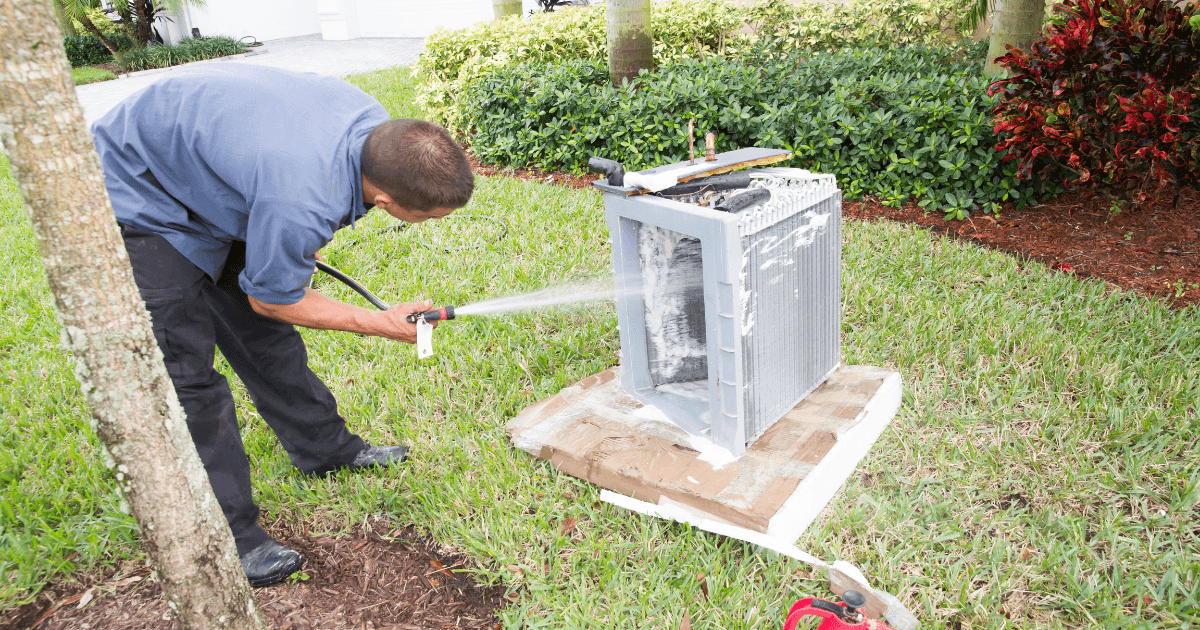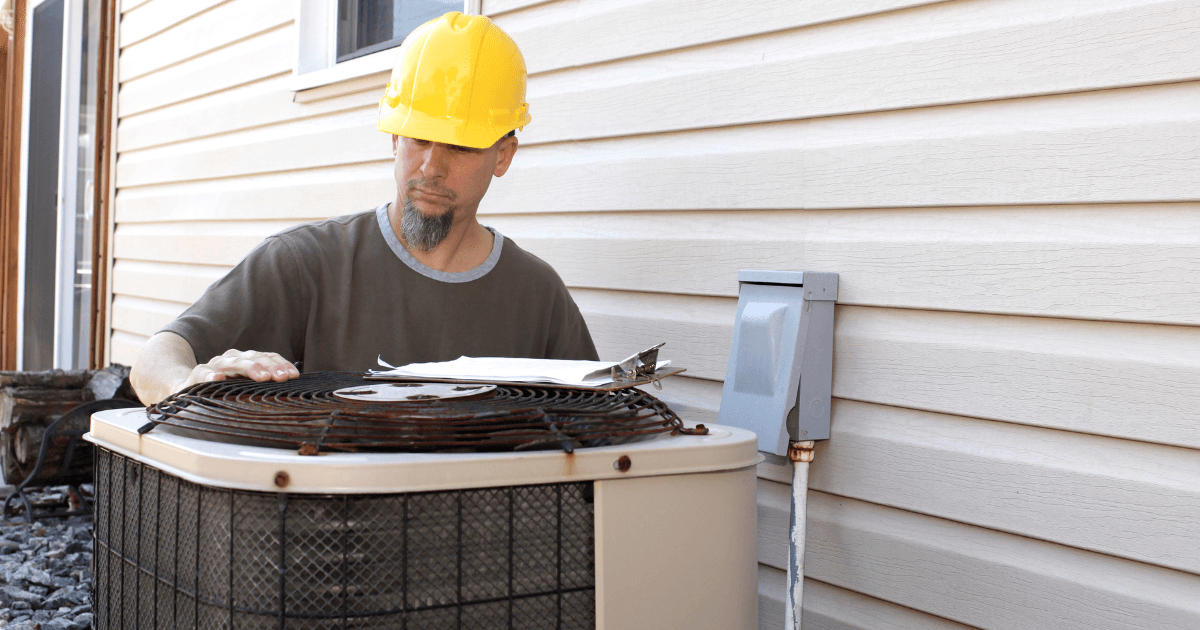Arizona’s intense desert heat can turn a home into an oven if it isn’t equipped with a properly sized air conditioner. In a place where summer temperatures regularly soar above 100°F, cooling your home efficiently requires more than just a standard formula. Choosing the right size AC unit for your Arizona home means considering a complex interplay of factors including square footage, insulation, sun exposure, and even ceiling height.
In this article, we’ll break down the fundamentals of air conditioning sizing using first principles thinking. By deconstructing the core mechanisms of how cooling systems work and tailoring that knowledge to Arizona’s extreme climate, we’ll uncover practical, evidence-based strategies to ensure your AC system performs at its best.
The Science of Cooling: Understanding Air Conditioner Sizing from First Principles
To truly grasp how to size an air conditioner, we need to start with the basics of heat transfer. An air conditioner functions by removing heat from inside your home and expelling it outdoors. The more heat that enters your home, the harder your AC has to work to maintain a comfortable indoor temperature. Arizona’s climate makes this task even more difficult, as the dry heat allows radiant energy to pour through windows and walls.
BTUs: The Foundation of AC Sizing
Air conditioners are sized based on their cooling capacity, measured in British Thermal Units (BTUs). One BTU is the amount of heat required to raise the temperature of one pound of water by one degree Fahrenheit. In terms of cooling, BTUs tell you how much heat an AC unit can remove from a room in one hour.
At a fundamental level, calculating the correct BTU capacity for your AC unit means determining how much heat enters your home. A commonly used rule of thumb is to allocate 20 BTUs per square foot of space. But this is only a starting point—more nuanced factors need to be considered, especially in Arizona’s unique environment.
Arizona’s Unique Climate: How Heat and Sun Exposure Change the Equation
Arizona presents a particular challenge for air conditioning systems. The region’s extreme heat is not just a result of air temperature but also the intense sun exposure that radiates heat into homes throughout the day. This is where traditional AC sizing formulas fall short.
Climate Zone Adjustments
The Department of Energy divides the U.S. into various climate zones, and Arizona falls into the most extreme zone in terms of cooling needs. For most homes, a standard BTU-per-square-foot formula may suggest adequate cooling power, but in Arizona, you should increase this number by 10-20% to account for the heat intensity. For instance, a 1,500-square-foot home typically requires around 30,000 BTUs, but in Phoenix, this should be bumped up to 36,000 BTUs or more.
Dry Air’s Impact
Arizona’s desert climate also brings very low humidity levels. While this may make the air feel less oppressive than in humid environments, it presents another challenge for your AC unit. Air conditioners both cool the air and remove moisture. Since the air is already dry, Arizona homes often need larger AC systems to compensate for the lack of moisture removal, which is one of the AC unit’s core functions in more humid regions.
Factors Beyond Square Footage: Sizing for Real-World Variables
While square footage is a major component in determining air conditioner size, it’s only part of the equation. To achieve optimal cooling efficiency, especially in Arizona’s demanding environment, you need to consider other variables such as ceiling height, insulation, and sun exposure.
Ceiling Height and Volume
One of the most overlooked factors in AC sizing is ceiling height. Most sizing guidelines assume an 8-foot ceiling. However, many modern homes feature vaulted ceilings, which increase the volume of air that needs to be cooled. A room with a 12-foot ceiling has 50% more air volume than one with an 8-foot ceiling, requiring significantly more cooling power.
Insulation and Air Leakage
Insulation plays a critical role in how much heat enters or escapes your home. Homes with poor insulation in the walls, roof, and attic allow more heat to penetrate, putting a greater load on the AC system. In Arizona’s intense summer sun, radiant heat from the roof can increase indoor temperatures dramatically. Upgrading attic insulation or installing radiant barriers can significantly reduce your home’s cooling load, allowing you to choose a more efficient AC unit.
Additionally, windows are a major source of heat gain, particularly those that are south or west-facing. Energy-efficient windows or window treatments can block a substantial portion of this heat, reducing the overall size of the AC unit needed.
Sun Exposure and Home Orientation
The orientation of your home also plays a vital role in determining the size of your AC system. In Arizona, west-facing windows absorb the most intense afternoon sun, heating up your living spaces and requiring more cooling power. If your home has large windows with significant sun exposure, especially during peak afternoon hours, you’ll need to factor that into your BTU calculations. Solar shades, window films, or awnings can mitigate this effect and reduce your cooling needs.
Choosing the Right SEER Rating for Arizona’s Energy Demands
Selecting the correct SEER (Seasonal Energy Efficiency Ratio) rating for your air conditioner is just as important as choosing the right size. The SEER rating measures how efficiently an AC unit converts electricity into cooling over a typical cooling season.
Why SEER Matters in Arizona
Given Arizona’s long, hot summers, homeowners should opt for air conditioners with SEER ratings of 16 or higher. These high-efficiency systems may have a higher upfront cost, but they provide significant energy savings in the long run. Homes in Arizona often run their air conditioners for eight or more months out of the year, so a more efficient unit can pay for itself over time through reduced energy bills.
High-SEER units also tend to have more advanced features, such as variable-speed fans and compressors, which help maintain a consistent indoor temperature while using less energy. This is crucial in Arizona, where the cooling load fluctuates throughout the day based on outdoor temperature and sun exposure.
Professional Sizing: The Manual J Load Calculation
For homeowners who want absolute precision in determining the right size air conditioner, it’s advisable to consult an HVAC professional who can perform a Manual J Load Calculation. This method, developed by the Air Conditioning Contractors of America (ACCA), provides an extremely detailed assessment of your home’s cooling needs, factoring in variables like insulation, air leakage, room usage, and even the number of occupants.
How Manual J Works
Manual J Load Calculation evaluates not just the square footage but the home’s unique characteristics, including:
- Window orientation and shading: A home with lots of unshaded windows facing the sun will require more cooling.
- Air leakage: Homes with older windows or insufficient sealing allow conditioned air to escape and hot air to enter, increasing the cooling load.
- Ductwork efficiency: Poorly designed or insulated ductwork can lead to significant cooling losses.
By providing an accurate picture of your home’s cooling demands, a Manual J calculation ensures that your air conditioner is neither too large nor too small—both of which can lead to inefficiency, increased wear, and higher energy bills.
Common Mistakes to Avoid When Sizing Your Air Conditioner
Oversizing the Unit
It’s a common misconception that bigger is better when it comes to air conditioners. An oversized AC unit will cool the home quickly but inefficiently, leading to a phenomenon known as short cycling. This means the AC will turn on and off frequently, which doesn’t allow the system to run long enough to remove humidity from the air. Short cycling also places more strain on the compressor, leading to faster wear and potential breakdowns.
Undersizing the Unit
On the other hand, an undersized unit will run continuously without adequately cooling your home. This leads to higher energy bills and unnecessary stress on the system, shortening its lifespan.
Conclusion: Getting the Right Fit for Your Arizona Home
Sizing your air conditioner correctly is one of the most important decisions you can make as an Arizona homeowner. By understanding the principles of heat transfer, factoring in Arizona’s extreme climate, and adjusting for variables like ceiling height, insulation, and sun exposure, you can ensure your AC unit performs efficiently and lasts for years. While DIY calculations provide a good starting point, consulting with an HVAC professional for a precise assessment can save you money, prevent system failures, and ensure your home remains cool and comfortable, even during Arizona’s hottest months.
Take action today by evaluating your home’s cooling needs and making sure your AC unit is optimized for both efficiency and performance. Your comfort—and your energy bills—depend on it.





